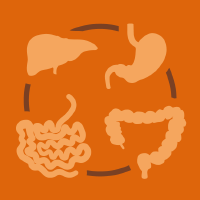Topic Menu
► Topic MenuTopic Editors

Inflammatory Bowel Disease (IBD): Mechanism to Management
Topic Information
Dear Colleagues,
Inflammatory bowel diseases (IBD), mainly represented by ulcerative colitis (UC) and Crohn’s disease (CD), have always represented a challenge for clinicians, surgeons and scientists.
Many efforts have been made in order to define the pathogenesis of the disease and to establish the best conservative and surgical treatment options. The advancement of molecular and clinical research plays a role in our understanding of IBD. The etiology is still unclear, but genetic, immunological, and environmental factors seem to be involved in the pathogenesis of the disease.
Recent advances have a substantial impact on the therapeutic paradigm: to date, the aim of medical treatment is not only to control and face symptoms, but to decrease inflammation, to induce mucosal healing and alter the natural course of the disease. Early surgery is gradually gaining a more important role in the multidisciplinary management of IBD, rather than being only a last resort therapy. Tailored surgical approaches are proven to be a good alternative in terms of effectiveness, quality of life and costs as first-line therapy or as part of combination therapy with biologicals for certain conditions. The particular course of the IBDs dictates, when necessary, a surgical treatment by dedicated surgeons. As well, the indication for surgery should be discussed in a multidisciplinary team. Moreover, even given the benign nature of this condition, the possible evolution of a malignant disease always has to be considered, for both the indication of surgery and the type of surgery to perform. Another key point of the IBD is the wide possibility of available surgical procedures to treat this condition, although this is difficult to standardize, and there is a high postoperative complication rate reported in literature.
This Special Issue offers an overview of the most recent advancements in the management of these patients.
Dr. Andrea Balla
Dr. Rosa Scaramuzzo
Dr. Anna Guida
Dr. Federica Saraceno
Topic Editors
Participating Journals
| Journal Name | Impact Factor | CiteScore | Launched Year | First Decision (median) | APC |
|---|---|---|---|---|---|

Life
|
3.2 | 2.7 | 2011 | 17.5 Days | CHF 2600 |

Gastroenterology Insights
|
2.9 | 2.7 | 2009 | 32.6 Days | CHF 1600 |

Surgeries
|
- | - | 2020 | 24.9 Days | CHF 1200 |

MDPI Topics is cooperating with Preprints.org and has built a direct connection between MDPI journals and Preprints.org. Authors are encouraged to enjoy the benefits by posting a preprint at Preprints.org prior to publication:
- Immediately share your ideas ahead of publication and establish your research priority;
- Protect your idea from being stolen with this time-stamped preprint article;
- Enhance the exposure and impact of your research;
- Receive feedback from your peers in advance;
- Have it indexed in Web of Science (Preprint Citation Index), Google Scholar, Crossref, SHARE, PrePubMed, Scilit and Europe PMC.




